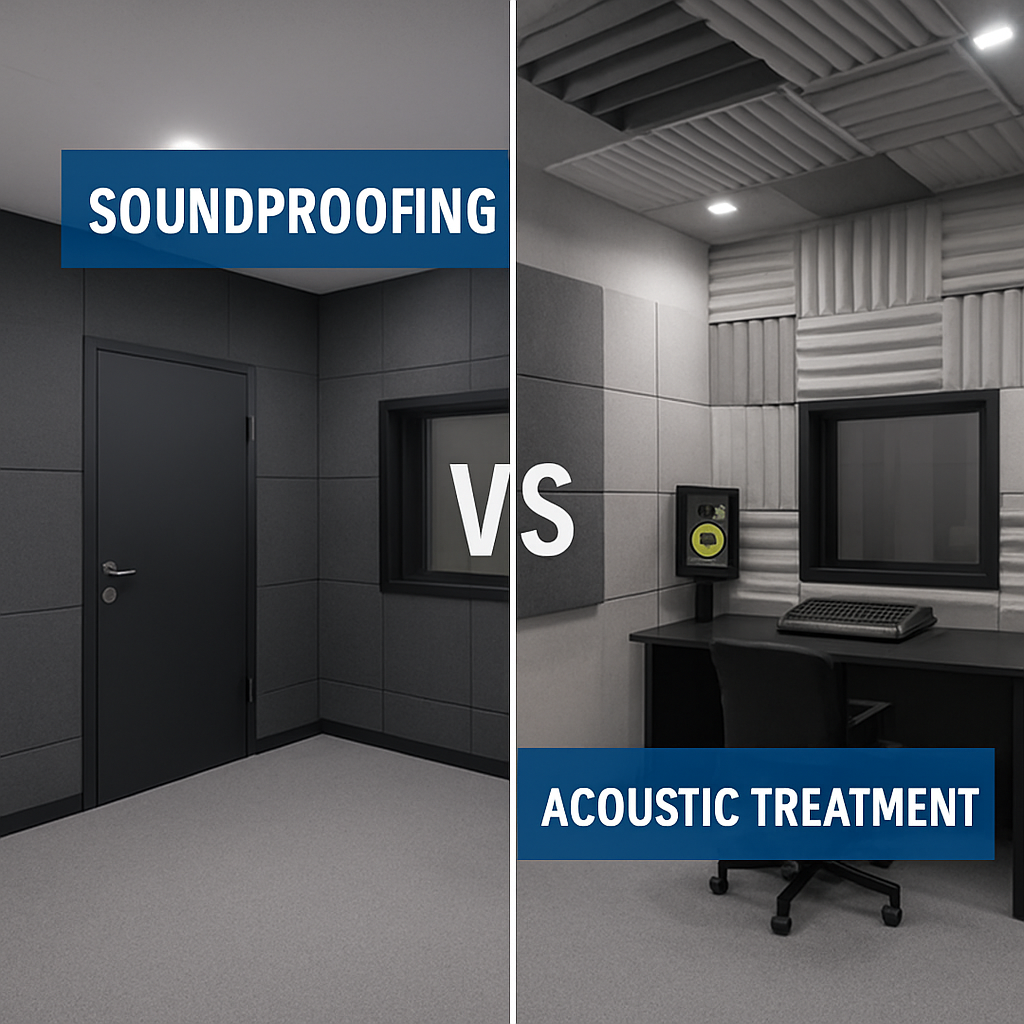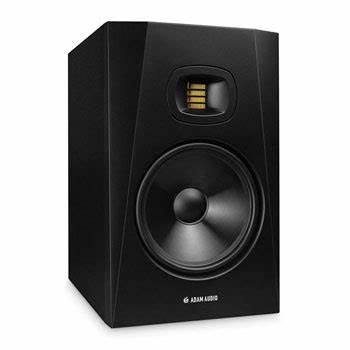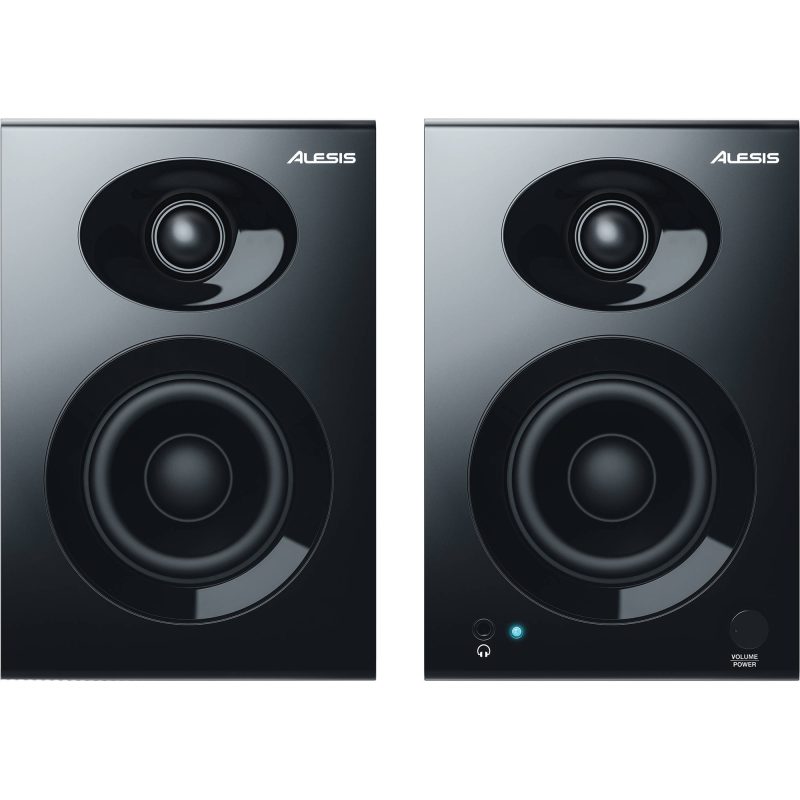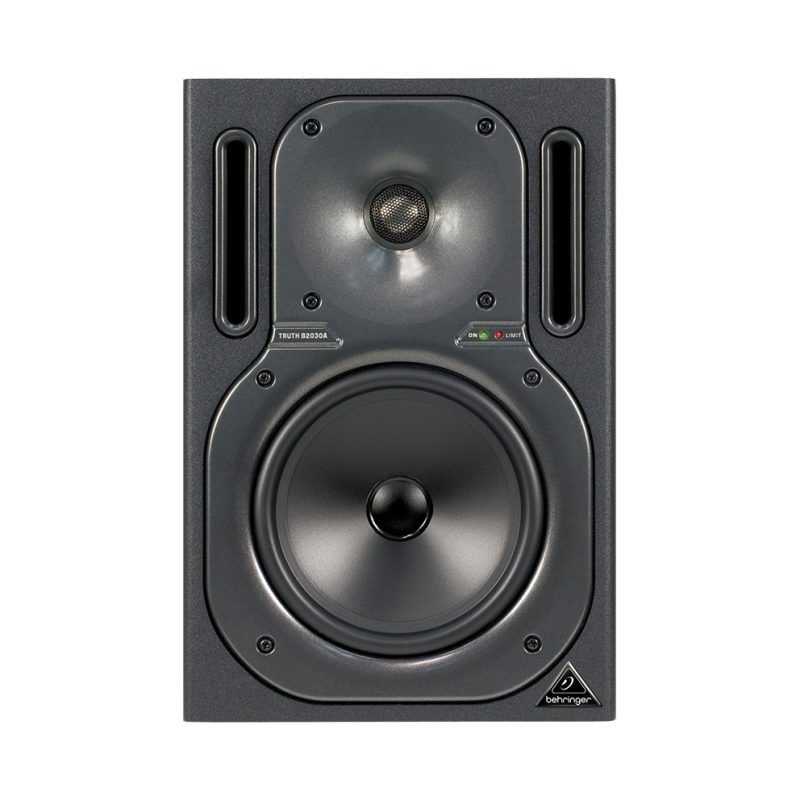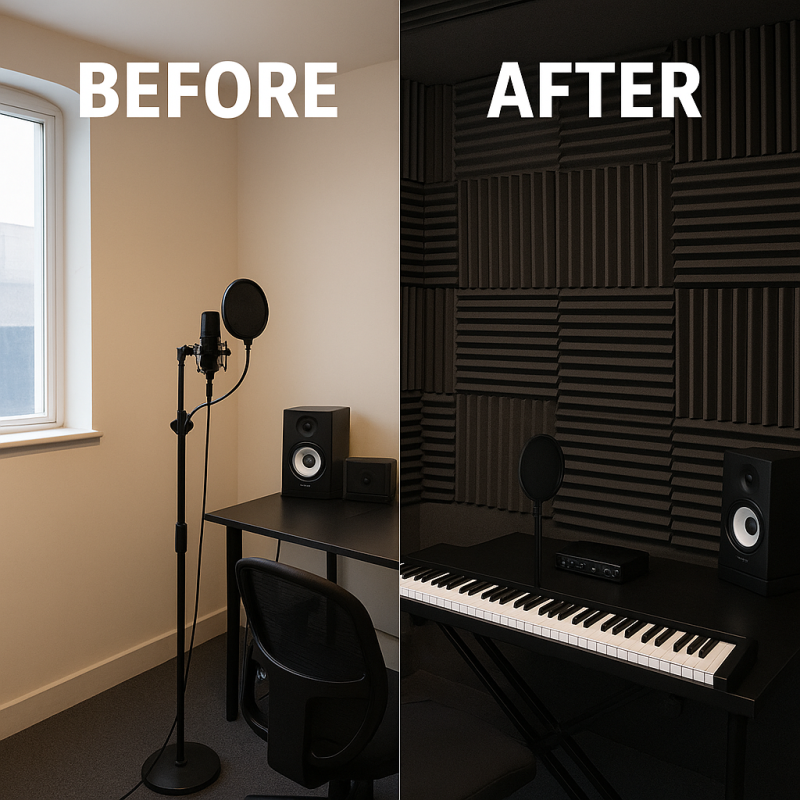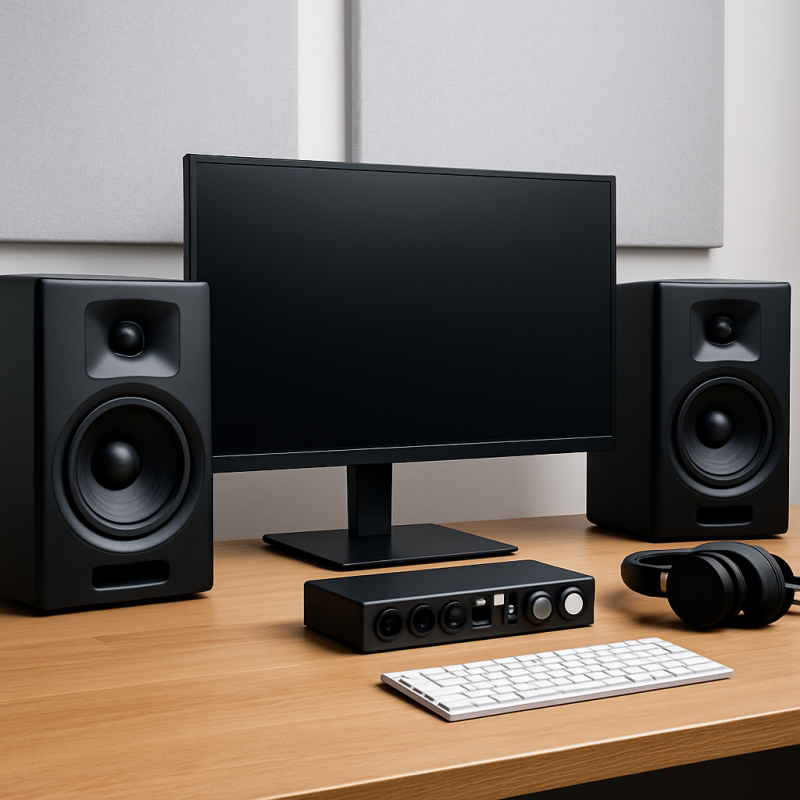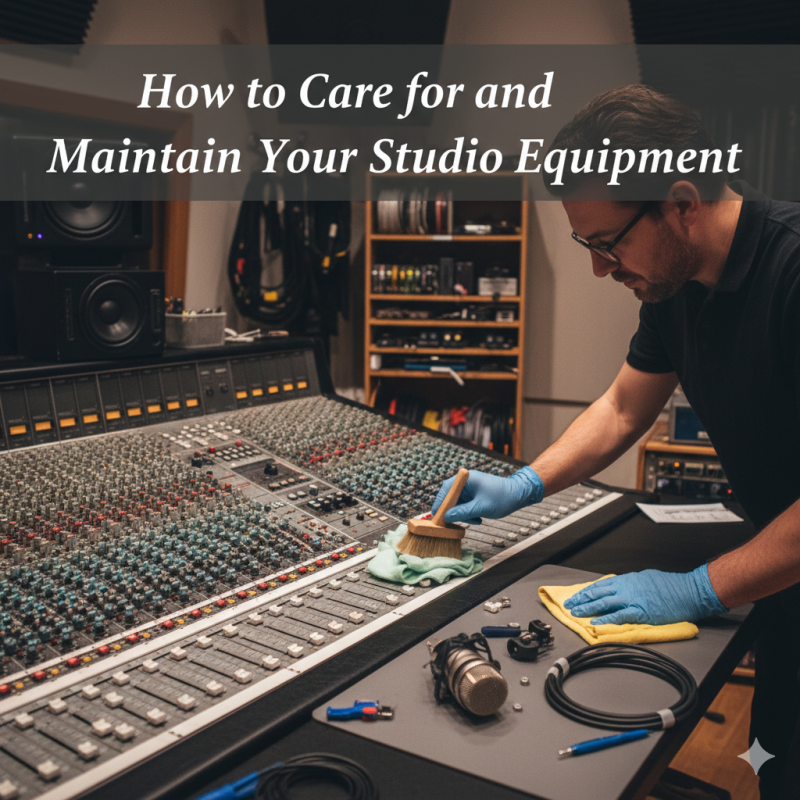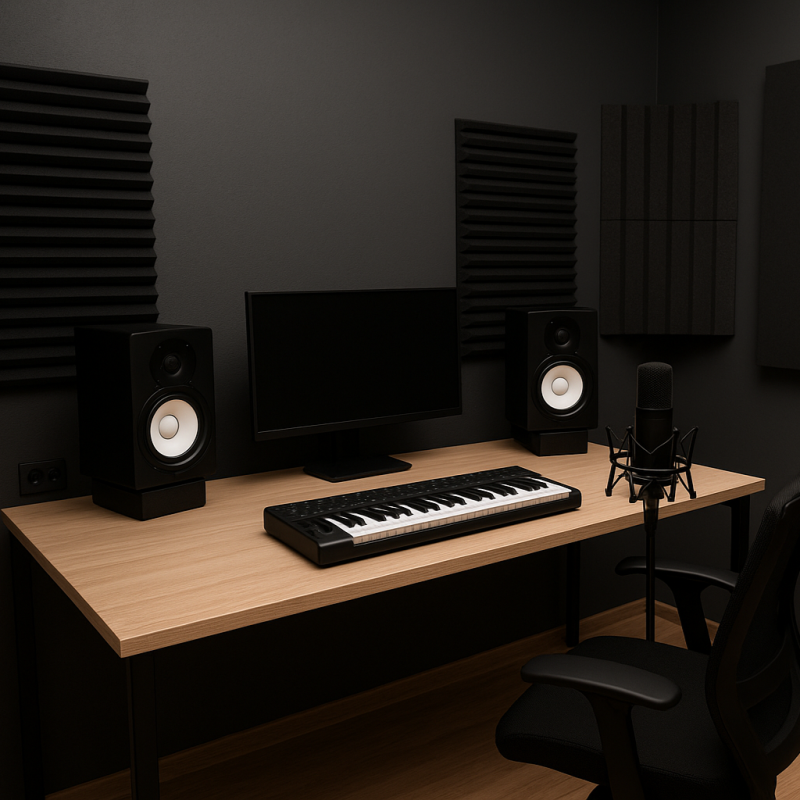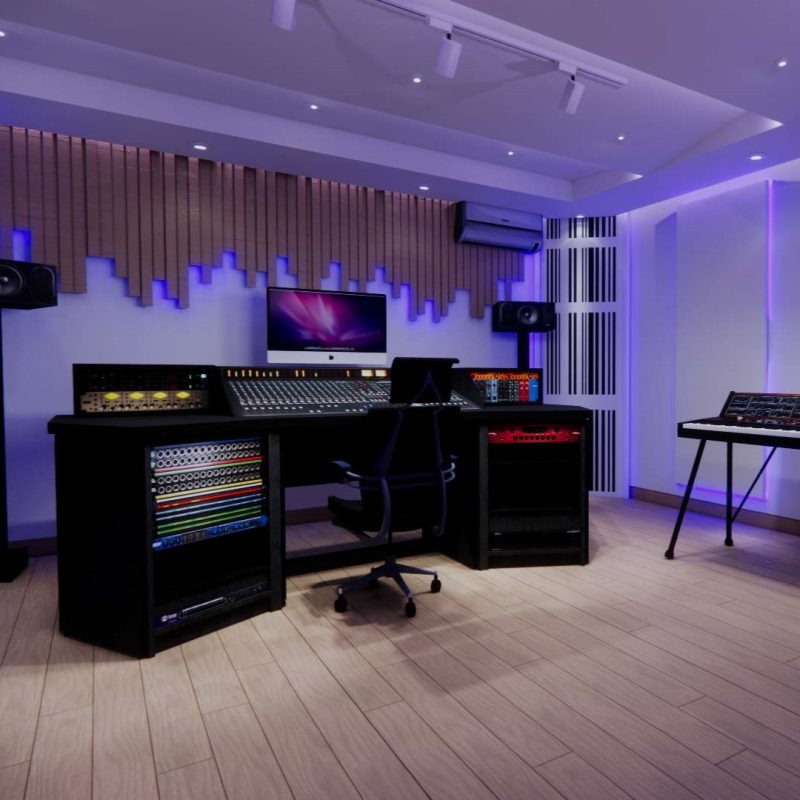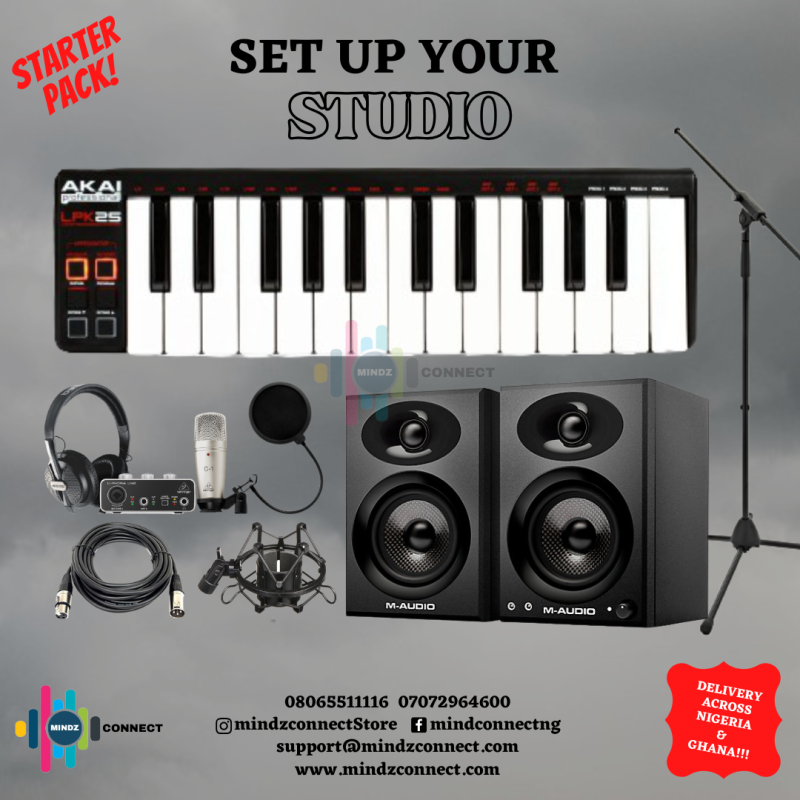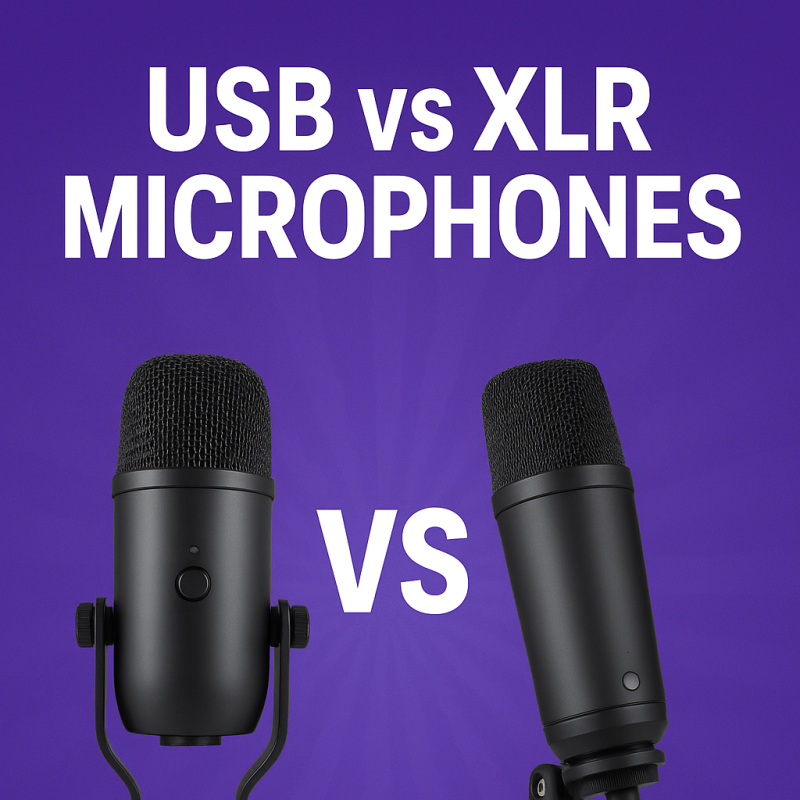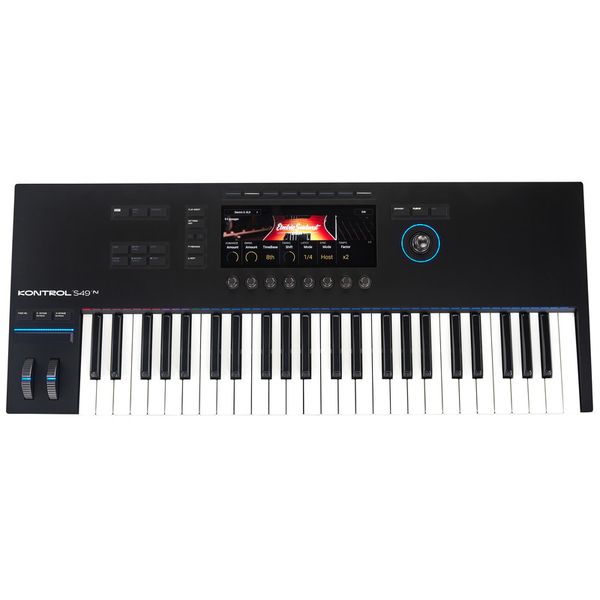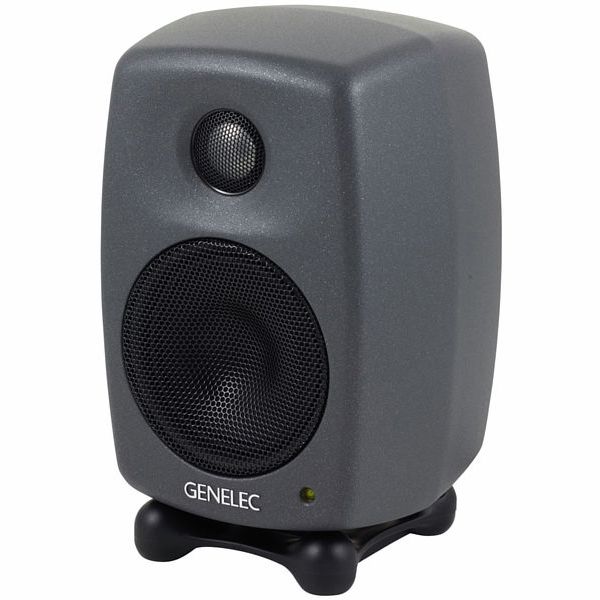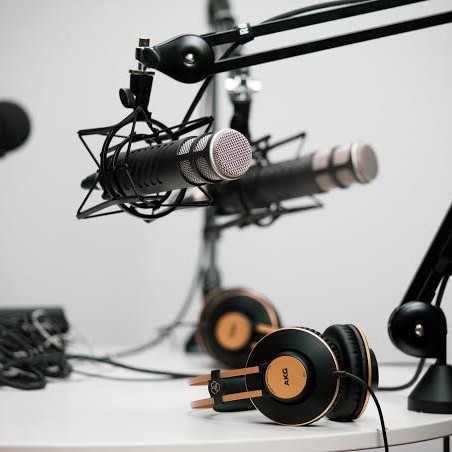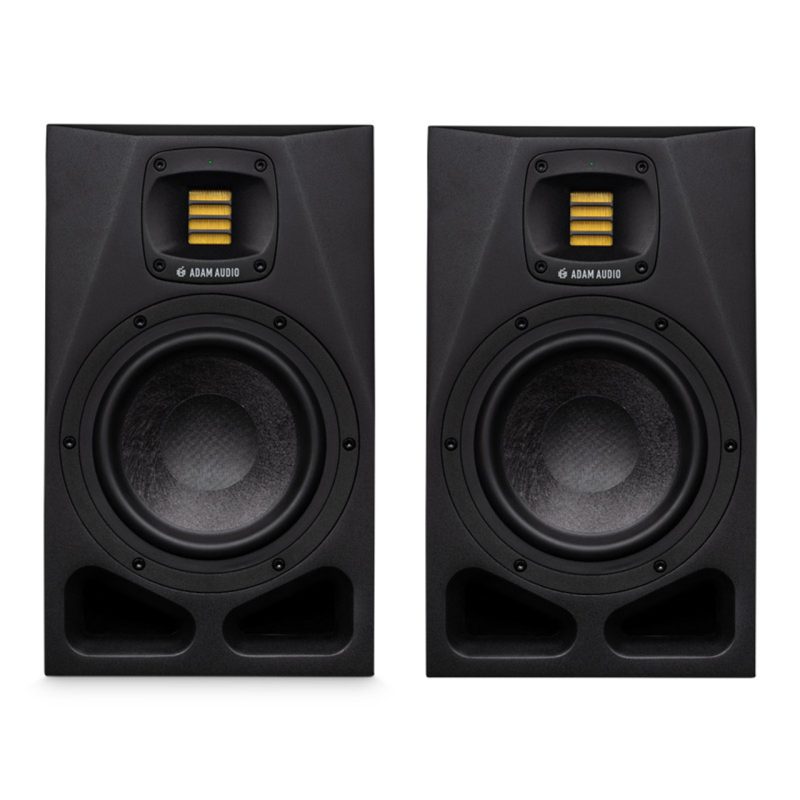Soundproofing vs Acoustic Treatment: Key Difference
Introduction
If you’re setting up a home studio, podcast room, or professional recording space, one of the first questions that comes up is:
“Do I need soundproofing or acoustic treatment?”
These two concepts are often misunderstood — but knowing the difference is crucial for building a high-performing studio.
At Mindz Connect, we specialize in studio equipment, soundproofing materials, and acoustic solutions for creators across Nigeria, Africa, the UK, and the USA. In this guide, we’ll break down the core differences, how each works, and when to use them — so you can design a studio that sounds as good as it looks.
What is Soundproofing?
Soundproofing is all about blocking sound transmission — preventing outside noise from entering your studio and stopping your recordings from leaking out.
It’s the process of creating isolation between your room and the world around it.
How Soundproofing Works
Soundproofing uses mass, density, and separation to block vibrations and air movement that carry sound waves.
This usually involves structural changes or heavy materials that form a physical barrier.
Common Soundproofing Techniques:
Adding Mass: Thick drywall, cement board, or MLV (Mass Loaded Vinyl) reduce sound transmission.
Decoupling: Creating air gaps between walls or ceilings to prevent sound vibrations from traveling.
Sealing Gaps: Using acoustic caulk, door seals, and double-glazed windows to stop air leaks.
Insulation: Filling walls with rock wool or acoustic insulation to absorb airborne noise.
Typical Soundproofing Materials:
Soundproof doors and windows
Acoustic sealant and gaskets
Soundproof curtains
Rubber underlays for floors
MLV (Mass Loaded Vinyl) barriers
🎧 Best Use Cases:
Recording studios near busy roads, airports, or generators
Apartment-based creators who need privacy
Professional studios requiring isolation between rooms
✅ Goal: Keep unwanted noise out and recorded sound
What Is Acoustic Treatment?
Acoustic treatment, by contrast, focuses on how sound behaves inside the room.
It doesn’t stop noise from entering or leaving — instead, it ensures your recordings sound clear, balanced, and accurate.
How Acoustic Treatment Works
When sound hits walls, ceilings, and furniture, it bounces around, creating reflections, echoes, and frequency build-ups. Acoustic treatment helps control these reflections, so your mixes translate well across all playback systems.
Common Acoustic Treatment Components:
Acoustic Panels: Absorb mid-to-high frequencies to reduce reflections.
Bass Traps: Absorb low-end frequencies that build up in corners.
Diffusers: Scatter sound evenly to prevent harsh reflections.
Ceiling Clouds: Control flutter echoes from the ceiling area.
Best Use Cases:
Home studios for music production or mixing
Podcasting and voice-over rooms
Editing and mastering suites
✅ Goal: Make your room sound great inside for accurate mixing and recording.
Soundproofing vs Acoustic Treatment: Key Differences
| Feature | Soundproofing | Acoustic Treatment |
|---|---|---|
| Purpose | Blocks sound from entering or leaving | Improves sound inside the room |
| Goal | Isolation | Clarity |
| Primary Materials | Dense and heavy (drywall, MLV, insulation) | Porous and absorptive (foam, panels, diffusers) |
| Installation | Structural or construction-based | Surface-mounted, aesthetic |
| Typical Cost Range | Higher — construction work required | Moderate — flexible installation |
| Impact | Controls noise between spaces | Controls sound quality within space |
In other words:
Soundproofing = Stops sound travel.
Acoustic Treatment = Controls sound behavior.
Which Should You Choose for Your Studio?
Your choice depends on your location, purpose, and budget.
If your studio is noisy (traffic, neighbors, generators): Prioritize soundproofing first to isolate your space.
If your studio is already quiet but mixes sound bad: Invest in acoustic treatment to improve clarity and accuracy.
For the best results: Combine both soundproofing the shell, then treat the interior for precision.
At Mindz Connect, we design tailored solutions that blend both — helping creators achieve professional sound even in challenging environments.
Expert Insight: The Science Behind the Sound
Soundproofing uses mass law (the heavier the barrier, the less sound passes through). Acoustic treatment uses absorption and diffusion — capturing or scattering sound to create balance.
These two principles are complementary. A perfectly soundproofed room without treatment will sound boomy and unnatural, while a fully treated but unproofed room will still suffer from external noise leaks.
Mindz Connect Solutions
We supply, install, and customize:
Soundproofing Systems: Doors, windows, MLV walls, underlays
Acoustic Treatments: Panels, bass traps, ceiling clouds, diffusers
Studio Equipment: Monitors, microphones, mixers, and accessories
We serve musicians, podcasters, and content creators across Nigeria, Ghana, Kenya, South Africa, the UK, and the USA — ensuring world-class sound no matter where you are.
Final Thoughts
Soundproofing and acoustic treatment aren’t the same but they work best together.
Think of it this way: Soundproofing isolates your sound. Acoustic treatment perfects your sound.
Whether you’re recording music, podcasts, or content creation, investing in both is essential for achieving clean, professional audio.
At Mindz Connect and Mindz Studioz, we’re your trusted partner in studio design, soundproofing, and acoustic solutions, turning ordinary rooms into professional sound spaces.
👉 Contact Mindz Studioz today to start your studio transformation wherever you are.
📞 For orders and enquiries: +2348065511116, +2347072964600
🌐 Visit: www.mindzconnect.com
ADAM Audio T5V Studio Monitor Speaker (pair)
ADAM Audio T7V Studio Monitor Speaker (pair)
ADAM AUDIO T8V Studio Monitor Speaker (Pair)
Alesis Elevate 3 Studio Monitor Speaker (Pair)
Alesis Elevate 4 – 50 W Powered Desktop Studio Monitor Speaker (Pair) with Subwoofer Output for Home Studios / Video-Editing / Gaming and Mobile Devices
- Powerful, room filling sound - Separate high-and low-frequency drivers with crossover; 25 W per channel output power - 50 W total
- Clarity - 4-Inch low-frequency driver in ported enclosure delivers rich, tight bass; 1-Inch silk dome tweeter provides smooth, clear highs
- Precision engineered - High-density wood cabinets suppress unwanted resonances; carefully formed baffle radiuses reduce edge diffraction
- Hear every detail - Elliptical tweeter waveguide optimizes dispersion and stereo imaging
- Feel the bass - Dedicated subwoofer output for use with virtually any powered subwoofer

